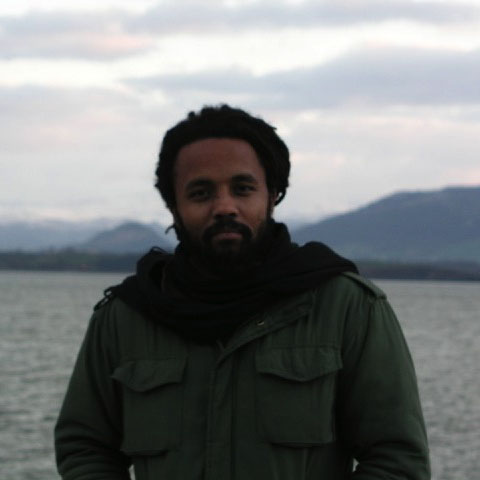
Originally trained as a painter, Portuguese artist and 2017 Inga Maren Otto Fellow, Carlos Bunga has been experimenting with the crossover between painting and sculpture for more than a decade. Creating large, site-specific installations Bunga’s work touches on issues relating to demographics, immigration, socio-economic disparity, and the fragility of contemporary city life.
Bunga creates architecturally-scaled installations, made from mass-produced materials such as cardboard, packing tape and household paint. These maquettes resemble temporary shelters or surreal colourful urban interiors which are in dialogue with the surrounding architecture of the gallery, reconfiguring it somewhere between a decaying space and a construction site.
Working across installation, sculpture, painting, performance, video and drawing Bunga’s practice involves a highly developed degree of aesthetic care and delicacy, and a conceptual complexity derived from the interrelationship between doing and undoing, transience and permanence, unmaking and remaking.
Bunga participated in “Manifesta 5” in San Sebastián (2004), “inSite_05” at the San Diego Museum of Art (2005), “14th Carrara International Sculpture Biennial” (2010), “29th Bienal de São Paulo” (2010), “Artes Mundi 6” in Cardiff (2013), and Chicago Architecture Biennial (2015).
Solo exhibitions took place at Museo de Arte Contemporánea de Vigo (2009), Pérez Art Museum Miami (2009), Pinacoteca do Estado de São Paulo (2010), Hammer Museum, Los Angeles (2011), Museu Serralves, Porto (2012), Museo Universitario de Arte Contemporáneo (MUAC), Mexico City (2013), Museo Amparo, Puebla (2014), Museum Haus Konstruktiv, Zürich (2015), Museo de la Universidad Nacional de Colombia, Bogotá (2015), and Museu d’Art Contemporani de Barcelona (MACBA) (2015).
Autumn Red. Rain, Wind and Movement (2017) represents an evolution in the work of Carlos Bunga, which is characterized by large site-specific, ephemeral installations made with cardboard, tape and paint.
For the first time, thanks to the invitation of The Watermill Center, Bunga has decided to abandon the comfort of the exhibition space for the exterior in order to dialogue with nature. During this process the forest has become an experimental laboratory that hosts a fragile construction. As with his previous projects, there are no preparatory sketches. The decision-making is done in situ during the process of creation.
The installation reflects the geographic and temporal condition of its location. The working hours for the installation were marked by the sunrise and sunset. The characteristics of the earth, vegetation, fauna, as well as the intermittent wind and rain, all contributed to the configuration of this piece. The result is a large diaphanous structure with generous openings that allow for the circulation of the wind and the movement of the branches and its foliage, with a base structure that levels the irregularities of the ground and a height that permits its integration among the oak trees—an organic structure with subtle movement.
At The Watermill Center, the duration of the piece was dictated by place and climate. In many instances Bunga has intervened in his structures by purposely collapsing them, accelerating the action of time and deterioration. Here, the wind had the advantage and deconstructed the piece two days before it was finished. Autumn Red fell during the same time as many of the leaves in its surroundings, in the middle of the darkness. We are left with the foundations, its documentation and absence—a concept that accompanies many of the artist’s works. In a time of image saturation, where the world is explained through them, a challenge would be to make something that once existed, invisible, and pave way to imagination.
Autumn Red was idea and form, as well as absence and memory. Its fragility speaks of the passing of time, life cycles, the importance of processes and transformation. Art can also die, however what counts is the seed.
– Ainhoa González

